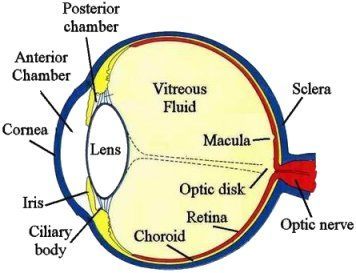Understanding Legal Blindness: Definitions & Criteria
Ian C. Langtree - Writer/Editor for Disabled World (DW)
Published: 2019/10/05 - Updated: 2025/10/09
Publication Type: Informative
Category Topic: Blindness and Vision Loss - Academic Publications
Page Content: Synopsis - Introduction - Main - Insights, Updates
Synopsis: This informative publication provides practical definitions and medical criteria for understanding legal blindness and related vision impairments. The information is authoritative because it draws from established governmental jurisdictions and the World Health Organization's International Statistical Classification of Diseases, offering standardized medical definitions that have real-world applications for determining disability benefits and services. The article clearly explains that in North America and most of Europe, legal blindness means having visual acuity of 20/200 or less in the better eye with correction, or a visual field of less than 20 degrees—meaning someone would need to stand 20 feet away to see what a person with normal vision sees at 200 feet.
What makes this particularly useful for people with visual disabilities, seniors, and their families is the breakdown of different categories: total blindness (no light perception), severe visual impairment with residual vision (light perception only), and low vision (20/70 to 20/200 acuity). The article notes that approximately 90 percent of those classified as legally blind retain some vision, which helps readers understand that legal blindness doesn't necessarily mean complete darkness, and this distinction can be crucial when accessing services, understanding accommodation needs, or helping others comprehend what someone with visual impairment actually experiences - Disabled World (DW).
Introduction
Approximately ten percent of those deemed legally blind, by any measure, have no vision. The rest have some vision, from light perception alone to relatively good acuity. Low vision is sometimes used to describe visual acuities from 20/70 to 20/200.
Main Content
Blindness is defined as the condition of lacking visual perception due to physiological or neurological factors. Various scales have been developed to describe the extent of vision loss and define blindness:
- Total blindness: Total blindness is defined as the complete lack of form and light perception and is clinically recorded as NLP - an abbreviation for no light perception.
- Blindness: Blindness is the term frequently used to describe severe visual impairment with residual vision. Those described as having only "light perception" can see no more than the ability to tell light from dark. A person with only light projection can tell the general direction of a light source. Blindness is also defined as visual acuity of less than 3/60, or corresponding visual field loss to less than 10 degrees, in the better eye with best possible correction.
In order to determine which people may need special assistance because of their visual disabilities, various governmental jurisdictions have formulated more complex definitions referred to as legal blindness.

Legal Blindness
In North America and most of Europe, legal blindness is defined as visual acuity (vision) of 20/200 (6/60) or less in the better eye with best correction possible. This means that a legally blind individual would have to stand 20 feet (6 m) from an object to see it with the same degree of clarity as a normally sighted person could from 200 feet (60 m).
In many areas, people with average acuity who nonetheless have a visual field of less than 20 degrees (the norm being 180 degrees) are also classified as being legally blind.
Approximately ten percent of those deemed legally blind, by any measure, have no vision. The rest have some vision, from light perception alone to relatively good acuity.
Low Vision
Low vision is sometimes used to describe visual acuities from 20/70 to 20/200. By the 10th Revision of the WHO International Statistical Classification of Diseases, Injuries and Causes of Death, low vision is defined as visual acuity of less than 6/18, but equal to or better than 3/60, or corresponding visual field loss to less than 20 degrees, in the better eye with best possible correction.
Insights, Analysis, and Developments
Editorial Note: Understanding the technical definitions of legal blindness serves a purpose beyond medical classification—it helps bridge the gap between clinical measurements and lived experience. When someone learns they meet the criteria for legal blindness, they're often surprised to discover they may still have usable vision, and this knowledge can be the difference between accessing vital support services or struggling without them. The standardized thresholds exist not to label people but to ensure consistent access to assistive technologies, educational accommodations, and workplace modifications that can maintain independence and quality of life - Disabled World (DW). Author Credentials: Ian is the founder and Editor-in-Chief of Disabled World, a leading resource for news and information on disability issues. With a global perspective shaped by years of travel and lived experience, Ian is a committed proponent of the Social Model of Disability-a transformative framework developed by disabled activists in the 1970s that emphasizes dismantling societal barriers rather than focusing solely on individual impairments. His work reflects a deep commitment to disability rights, accessibility, and social inclusion. To learn more about Ian's background, expertise, and accomplishments, visit his full biography.
Author Credentials: Ian is the founder and Editor-in-Chief of Disabled World, a leading resource for news and information on disability issues. With a global perspective shaped by years of travel and lived experience, Ian is a committed proponent of the Social Model of Disability-a transformative framework developed by disabled activists in the 1970s that emphasizes dismantling societal barriers rather than focusing solely on individual impairments. His work reflects a deep commitment to disability rights, accessibility, and social inclusion. To learn more about Ian's background, expertise, and accomplishments, visit his full biography.